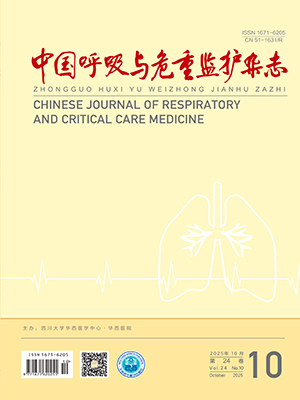Objective To explore the risk factors of invasive fungal infection ( IFI) in respiratory ward. Methods A multi-center, retrospective, case-control study was carried out. Patients from five general hospitals in Chongqing city, diagnosed as fungal infection, or whose respiratory specimens were fungal positive, were retrospectively screened for IFI. Patients with respiratory infection and colonization of nonfungal cases in the same period of hospitalization were enrolled as control. Results Thirty-four patients diagnosed with IFI and 50 patients diagnosed with bacterial infection were analyzed for the risk factors of IFI. The demographic characteristics of patients including age and gender were not different( P gt; 0. 05) , but hospitalization days, carbapenem antibiotic use, chemotherapy, deep venous catheterization, total parenteral
nutrition( TPN) , neutropenia, and renal disfunction were different significantly between the IFI group and the control group. Multiple logistic regression analysis showed that carbapenem antibiotic use ( OR = 6. 753) ,central venous catheterization ( OR = 5. 021) and TPN ( OR = 3. 199) were main risk factors of invasive fungal infection. Conclusion The carbapenem antibiotic use, central venous catheterization and TPN are risk factors for IFI in respiratory ward.
Citation: WU Xueling,LI Xuejun,CHEN Hong,WANG Daoxin,CAO Guanming,WANG Changzheng. Risk Factors of Invasive Fungal Infection in Respiratory Ward: A Retrospective Case Control Study. Chinese Journal of Respiratory and Critical Care Medicine, 2009, 09(6): 544-546. doi: Copy
Copyright © the editorial department of Chinese Journal of Respiratory and Critical Care Medicine of West China Medical Publisher. All rights reserved




